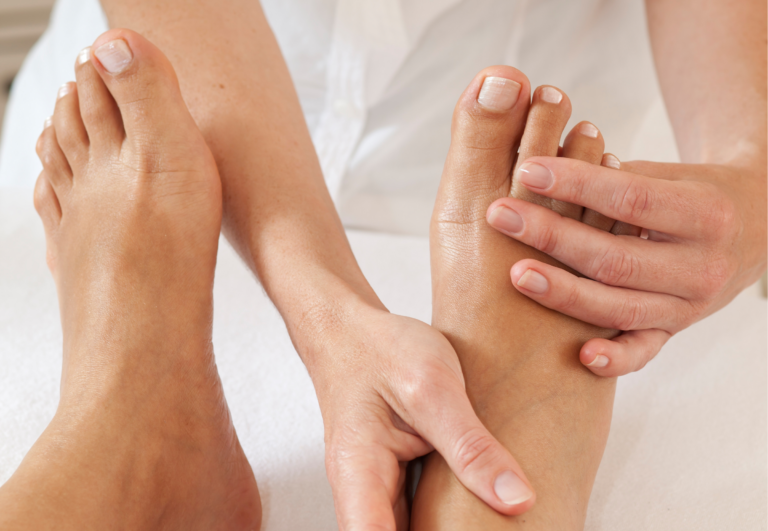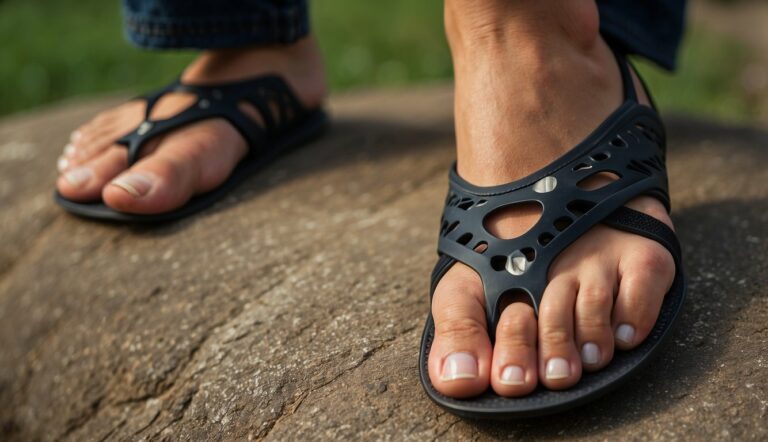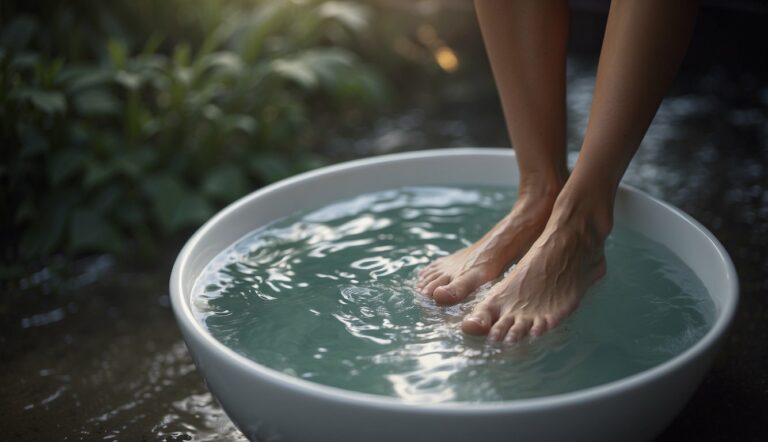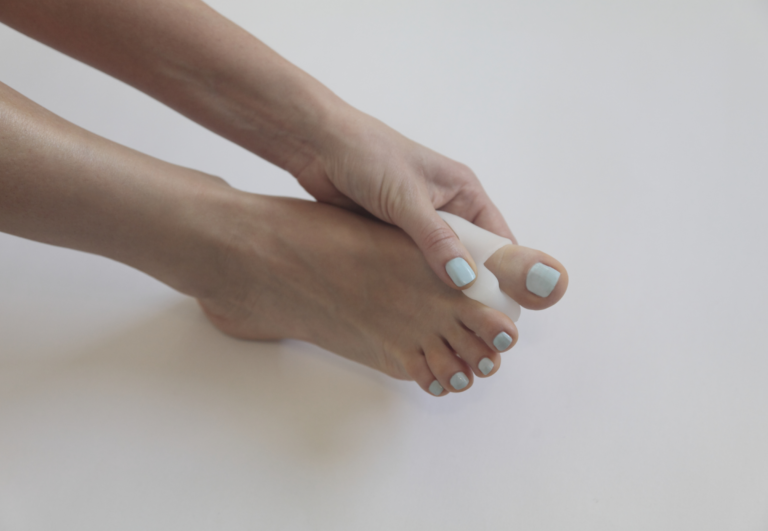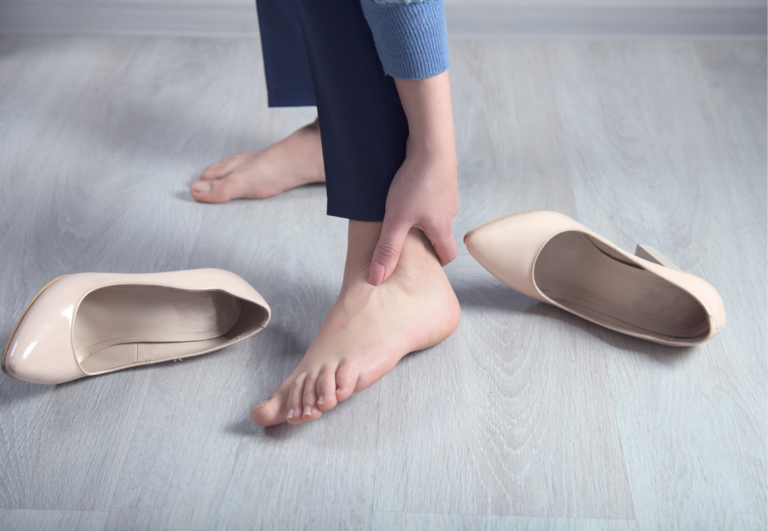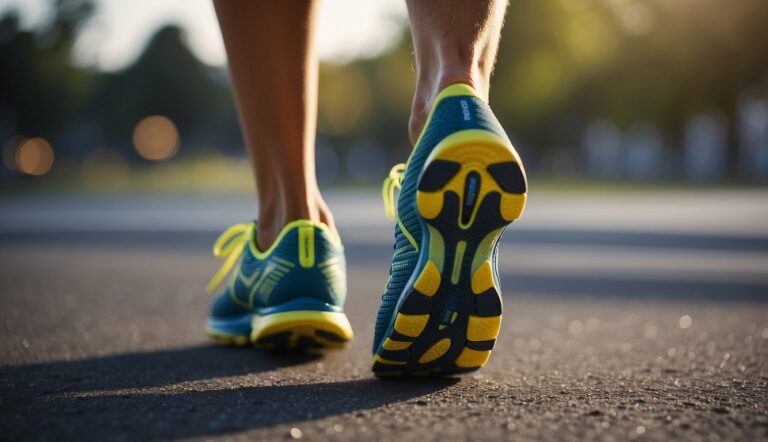Foot Stretches with Toe Spacers: Enhance Your Flexibility and Comfort
Incorporating toe spacers into a foot stretch routine can significantly enhance foot flexibility and mobility. As someone who has seen the benefits firsthand, I find toe spacers to be an excellent tool for alleviating foot issues. These simple devices fit between your toes, gently pushing them apart to counteract the compression that often results from tight shoes or prolonged standing.
I’ve noticed that regular use of toe spacers can help reduce foot pain and improve the overall health of my feet. They’re particularly useful for individuals who experience discomfort from conditions like bunions or hammertoes. While toe spacers cannot substitute for medical advice, they are a practical addition to anyone’s foot care regimen aiming to maintain or improve toe alignment and foot structure.
My experience with toe spacers has taught me that consistency is key. Integrating them into daily foot stretches can make a noticeable difference. By doing so, you’re not just working on immediate relief but also on the long-term well-being of your feet. It’s important to start slow and listen to your body, gradually increasing your use of toe spacers as your feet become accustomed to them.
Quick Overview of Toe Spacers
Toe spacers are devices that fit between the toes to help improve alignment and offer comfort. They can be used alongside a routine of stretches and exercises for better foot health.
Types of Toe Spacers
Toe spacers are available in different materials, each offering unique benefits:
- Silicone: Durable and flexible, silicone toe spacers offer a balance between comfort and support.
- Gel: Gel spacers provide cushioning and conform well to the toe shape.
- Foam: Lightweight and often more affordable, foam spacers may be better suited for temporary use.
Benefits of Using Toe Spacers
Using toe spacers can lead to multiple foot health benefits:
- Pain Relief: They alleviate pain by reducing pressure on the toes.
- Improved Posture: By aligning the toes, they may contribute to better posture and balance.
- Enhanced Comfort: Spread toes reduce the risk of overlapping and the discomfort it causes.
Choosing the Right Material
Selecting the appropriate toe spacer material depends on your specific needs:
- For Long-term Use: Silicone is typically recommended due to its longevity and flexibility.
- For Cushioning: If comfort is a primary concern, gel might be the best choice.
- For Temporary Alignment: Foam spacers can be used for short-term correction and are often less expensive.
Remember, while I share this knowledge based on experience with toe spacers, it is not medical advice. Please consult a healthcare provider for personalized recommendations.
Conditions Addressed by Toe Spacers
Toe spacers are designed to alleviate discomfort and address various foot conditions by realigning the toes to their natural position. They can be particularly beneficial for individuals suffering from bunions, hammertoes, plantar fasciitis, and general toe pain.
Bunions and Hammertoes
Bunions, characterized by a protruding bump at the base of the big toe, and hammertoes, where toes are bent at the middle joint, can both result in pain and impaired foot function. Here’s a simple routine to help these conditions:
- Toe Spreads: Place the toe spacers between each toe, sit back, and relax for 5-10 minutes to allow your toes to stretch out.
- Flex and Point: With the spacers in place, slowly flex your toes down and then point them up, repeating this 10 times to strengthen toe muscles and increase flexibility.
- Toe Curls: With spacers still on, try to curl your toes and hold for a few seconds before releasing. Perform this 10 times to help realign the toes.
Be sure to engage in these exercises regularly for optimal results, and always listen to your body to avoid overexertion.
Plantar Fasciitis and Toe Pain
Plantar fasciitis is a common cause of heel and arch pain, often due to flat feet or high arches, while toe pain can arise from excessive pressure, corns, and calluses. Toe spacers help by distributing the toes naturally, which may alleviate the strain on the plantar fascia.
- Arch lifts: While seated, place the toe spacers, then engage your arch muscles to lift them upwards. Hold for a few seconds, then release. Aim for 3 sets of 10 repetitions.
- Toe Extensions: With spacers inserted, work on lifting each toe individually and then releasing it. This helps strengthen the muscles and can reduce toe pain.
Include these exercises in your daily routine to help manage symptoms associated with plantar fasciitis and toe pain. Remember, consistency is key to seeing improvement.
How to Use Toe Spacers Effectively
Incorporating toe spacers into your routine can enhance foot strength and promote better alignment. They aid in maintaining the natural spacing of toes, which contributes to improved balance, stability, and range of motion.
Proper Placement
- Begin by cleaning your toes and the toe spacers to reduce the risk of irritation.
- Sit in a comfortable position with your feet flat on the floor.
- Gently slide each toe spacer between the corresponding toes, making sure they sit snugly but do not cause discomfort.
- Adjust the toe spacers as needed for an even distribution of space.
- Toe spacers should be positioned at the base of the toes rather than pushed too far to avoid pain.
- Ensure your toes are not overextended, which could strain rather than stretch them.
Duration and Frequency of Use
- Initial Use: Start with 5-10 minutes and gradually increase as comfort allows.
- Daily Use: Aim for a total of 30 minutes to 1 hour per day, divided into smaller sessions if needed.
- Regular Exercise: Incorporate toe spacers during foot-targeted exercises or stretches to maximize benefits.
| Day | Duration | Activity |
|---|---|---|
| Monday | 10 minutes | Toe spacer placement practice |
| Tuesday | 15 minutes | Static stretches with spacers |
| Wednesday | 20 minutes | Walking with toe spacers |
| Thursday | Rest Day | — |
| Friday | 30 minutes | Balance and stability exercises |
| Saturday | 30 minutes | Range of motion and recovery time |
| Sunday | Rest Day | — |
Key Reminders:
- Gradual increases prevent overstretching and discomfort.
- Regularity is crucial for noticeable improvements in toe alignment and foot function.
- Monitoring for any signs of pain or distress is important to prevent injury. If uncomfortable, reduce use and consult a professional.
Incorporating Stretches with Toe Spacers

Effectively incorporating toe spacers into your stretching routine can significantly enhance foot flexibility and strength. I’ll guide you through simple stretches to start with and then move on to more advanced techniques for further improvement.
Simple Foot Stretches
Initially, it’s essential to engage in gentle, easy-to-perform stretches that prepare the toes for more extensive exercise:
- Big Toe Press and Stretch: Begin by sitting comfortably with your toe spacers in place. Press the big toe downward, hold for 5 seconds, and then lift. Repeat this 10 times for each foot to strengthen the toe’s flexibility.
- Toe Splay: With spacers between your toes, try to splay them apart without using your hands. Hold the splay for a few seconds, and then relax. Do this for 1-2 minutes to promote toe separation and flexibility.
Advanced Stretching Techniques
Once accustomed to simple stretches, you can advance to these exercises to further develop foot strength and stability:
- Yoga Toes Gems Pose: Sit with legs extended forward and toe spacers on. Point your toes towards the ceiling and then curl them down as if to form a “gem” shape with the feet. Hold each position for 5 seconds, alternating 10 times.
- Dynamic Toe Flexion with Resistance Band: Place a resistance band around your toes with spacers on. Extend your leg straight out. Flex your toes back against the band’s resistance, then point them forward. Perform this movement for 10 repetitions to improve stability and strength.
Remember to warm up before performing these exercises to avoid strain and increase effectiveness. It’s not about rushing the process; give your toes the time they need to adapt to the new stretches with the spacers.
Additional Tools for Foot Health
In addition to toe spacers, there are several devices and gear that can aid in maintaining optimal foot health. Using the right footwear and insoles, as well as nighttime aids like splints, can make a significant difference in foot comfort and recovery.
Footwear and Insoles
Step-by-Step Routine with Footwear and Insoles:
- Select the Right Footwear: Look for shoes that provide ample space for your toes, avoiding any that cramp or compress them.
- Choose Quality Insoles: Pick insoles that offer proper arch support and fit the shape of your foot.
- Insert Insoles Correctly: Place the insoles into your shoes, ensuring they’re flat and aligned with the bottom of the shoe.
- Wear and Assess: Spend some time walking around to ensure the insoles feel comfortable and provide the support you need.
Key Features in Footwear:
- Wide toe box
- Adequate cushioning
- Arch support
Recommended Insoles:
- Over-the-counter orthotics
- Custom-designed insoles recommended by a foot surgeon or podiatrist
Night Splints and Recovery Aids
Night Splints:
Night splints are devices designed to be worn during sleep to maintain a stretched position of the foot and ankle. They can help with conditions like plantar fasciitis by keeping the foot in a dorsiflexed position.
- Usage Tips:
- Wear Night Splints: They should be put on before sleeping and worn throughout the night.
- Consistency is Key: Use the splints regularly for the best results.
Recovery Aids:
Other recovery aids include compression socks and ice packs that can be used after a long day on your feet or post-exercise to reduce swelling and promote circulation.
- Effective Recovery Aids:
- Compression socks
- Ice packs
- Elevation of feet
My experience with Correct Toes toe spacers has taught me the importance of complementing their use with supportive footwear and recovery aids, like night splints, to enhance foot health. Remember, while I’m well-versed in the use of toe spacers and auxiliary foot-care products, always consult a healthcare professional for personalized medical advice.
